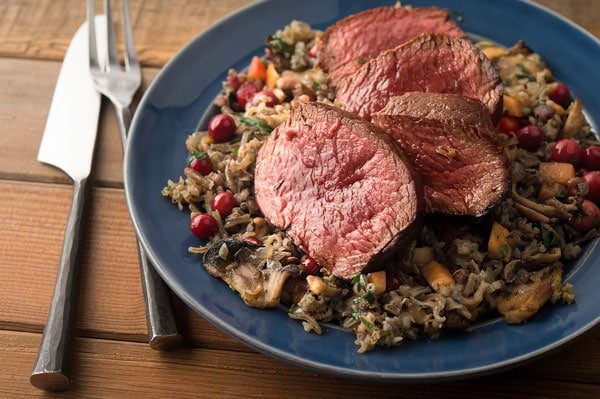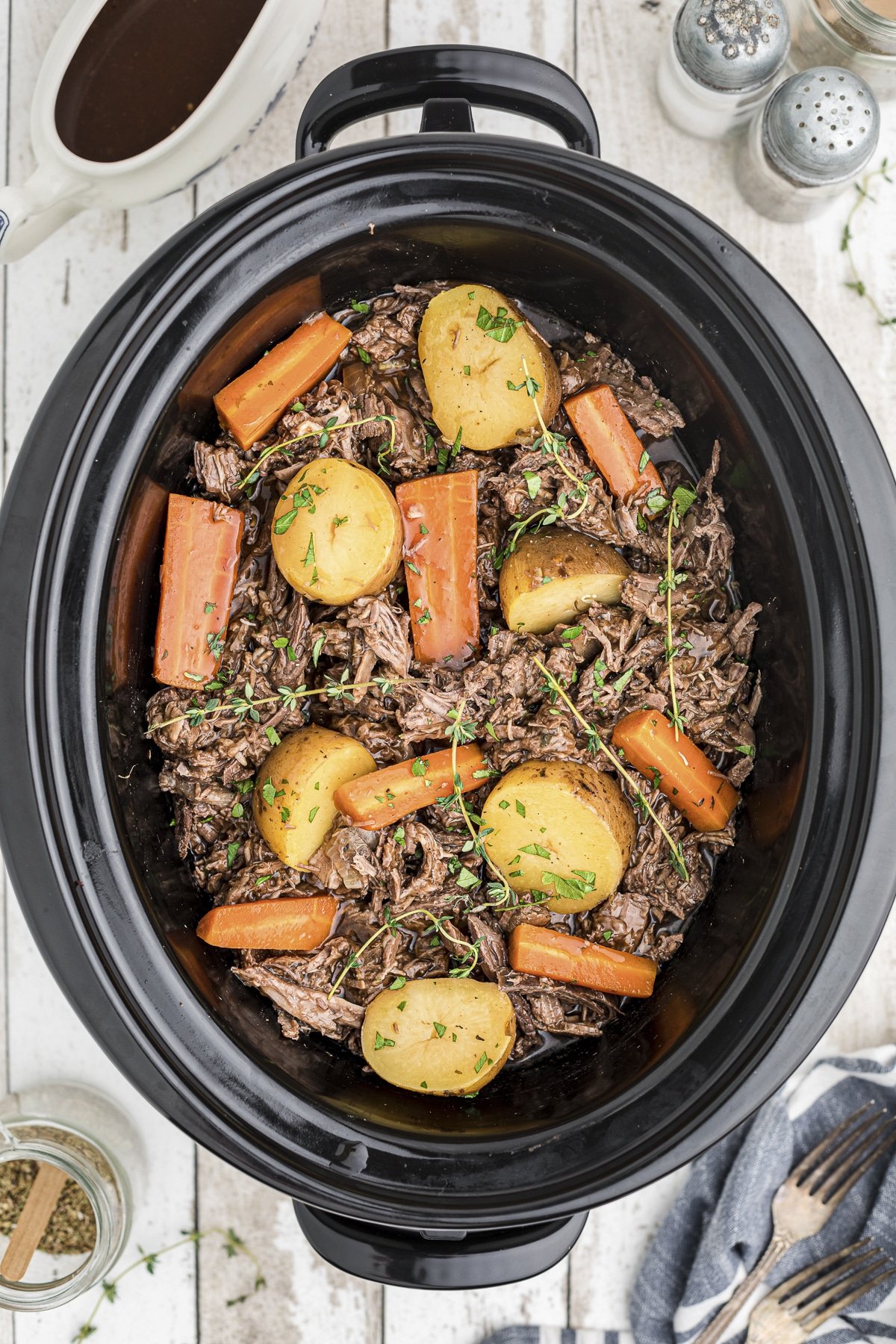
A Taste of Tradition: Authentic Native American Venison and Wild Rice Pot Roast
The crackling fire, the crisp autumn air, the scent of woodsmoke mingling with the earthy aroma of game – these are the sensory hallmarks of a traditional Native American meal. For centuries, indigenous peoples across North America have relied on the bounty of the land, and venison, alongside the sacred wild rice, has been a cornerstone of their sustenance and culture. This recipe for Authentic Native American Venison and Wild Rice Pot Roast is more than just a meal; it’s a journey into that rich heritage, a celebration of ancestral wisdom, and a deeply satisfying culinary experience.
The beauty of this dish lies in its simplicity and its profound connection to the natural world. Unlike many modern pot roast recipes that rely on heavy, processed ingredients, this version embraces the pure flavors of the ingredients themselves. Venison, lean and flavorful, pairs perfectly with the nutty, slightly chewy texture of wild rice. The accompanying vegetables, often root vegetables that would have been readily available, provide sweetness and depth, while aromatic herbs and a touch of broth create a rich, nourishing gravy.
Understanding the Ingredients: A Deeper Connection

-
Venison: The deer has long been a vital source of protein and sustenance for countless Native American tribes. Its lean meat offers a distinct, gamey flavor that is both robust and satisfying. When choosing venison for this recipe, a tougher cut like the shoulder or shank is ideal for pot roasting. The slow, moist cooking method breaks down the connective tissues, rendering the meat incredibly tender and flavorful. The practice of hunting and utilizing every part of the animal speaks to a deep respect for nature and a commitment to sustainability.
-
Wild Rice: Often referred to as "manomin" or "the sacred grain," wild rice is not truly rice but rather the seed of an aquatic grass native to North America. It was and continues to be a vital food source for many indigenous communities, particularly in the Great Lakes region. Harvesting wild rice is a labor-intensive and culturally significant process, often involving canoes and traditional paddling techniques. Its unique, slightly smoky flavor and firm texture are a perfect counterpoint to the tender venison. It absorbs the rich broth, becoming plump and flavorful, adding a wonderful textural element to the pot roast.
-

Root Vegetables: Carrots, parsnips, and onions are common additions to this dish, reflecting the types of vegetables that would have been cultivated or foraged. Their natural sweetness caramelizes during the slow cooking, contributing to the depth of flavor in the gravy. These hearty vegetables are also packed with nutrients, making this a truly wholesome meal.
-
Aromatics and Herbs: The subtle use of herbs like thyme, rosemary, and bay leaves adds layers of complexity without overpowering the star ingredients. These were often gathered from the wild or grown in small gardens, further emphasizing the connection to the land.
The Art of Slow Cooking: Patience and Preservation
The method of pot roasting itself is an ancient technique. The concept of slow, moist cooking in a covered vessel allows tougher cuts of meat to become incredibly tender while infusing them with flavor from the surrounding ingredients and liquid. This method is incredibly efficient, requiring minimal active cooking time and allowing for the development of deep, rich flavors. It’s a testament to the ingenuity of people who understood how to extract the most nourishment and flavor from their available resources.
Beyond the Plate: Cultural Significance
This recipe is more than just a collection of ingredients and instructions. It’s an invitation to connect with a rich cultural heritage. As you prepare and savor this dish, consider the generations of Native Americans who have relied on these same ingredients and techniques for survival and celebration. Think about the deep respect for the land, the importance of community, and the transmission of knowledge from elders to younger generations.
Sharing this meal can be a way to honor that legacy. It’s an opportunity to learn, to appreciate, and to keep these traditions alive. In a world that often moves at a breakneck pace, this pot roast encourages us to slow down, to be mindful of our food sources, and to savor the simple yet profound pleasures of a well-cooked meal shared with loved ones.
Adapting and Honoring Traditions
While this recipe aims to be authentic, it’s important to remember that Native American culinary traditions are diverse and have evolved over time. Different tribes and regions would have had their own variations, utilizing locally available ingredients and unique spice blends. Feel free to adapt this recipe to your own preferences and what you can source. If you have access to other wild game, experiment! If you can find different types of native herbs or vegetables, incorporate them. The spirit of this dish is about using what the land provides and creating something nourishing and delicious.
The preparation of this Venison and Wild Rice Pot Roast is a culinary act of reverence. It’s about understanding the origins of our food, the wisdom of our ancestors, and the enduring power of simple, wholesome ingredients. So, gather your ingredients, embrace the slow cooking process, and prepare to embark on a flavorful journey that connects you to the heart of Native American culinary traditions.
Authentic Native American Venison and Wild Rice Pot Roast Recipe
This recipe focuses on simple, natural flavors and the traditional method of slow cooking. It’s designed to be hearty, nourishing, and deeply satisfying.
Yields: 6-8 servings
Prep time: 25 minutes
Cook time: 3-4 hours
Ingredients:
-
For the Venison:
- 2-3 pounds venison roast (shoulder, shank, or chuck roast work well)
- 1 teaspoon salt
- 1/2 teaspoon black pepper
- 2 tablespoons rendered animal fat or olive oil (traditionally, animal fat like deer tallow would be used)
-
For the Vegetables:
- 2 medium carrots, peeled and cut into 1-inch chunks
- 2 medium parsnips, peeled and cut into 1-inch chunks (optional, but traditional)
- 1 large yellow onion, roughly chopped
- 2-3 cloves garlic, minced
-
For the Wild Rice and Broth:
- 1 cup wild rice, rinsed thoroughly
- 4 cups beef broth or venison broth (or a combination)
- 1 cup water
- 2 sprigs fresh thyme
- 1 sprig fresh rosemary
- 1 bay leaf
-
For Thickening (Optional):
- 2 tablespoons all-purpose flour or cornstarch
- 1/4 cup cold water
Equipment:
- Large Dutch oven or heavy-bottomed pot with a tight-fitting lid
Instructions:
-
Prepare the Venison: Pat the venison roast dry with paper towels. Season generously with salt and black pepper on all sides.
-
Sear the Venison: Heat the rendered animal fat or olive oil in the Dutch oven over medium-high heat. Carefully add the venison roast and sear it on all sides until deeply browned. This browning step is crucial for developing flavor. Remove the venison from the pot and set aside.
-
Sauté the Vegetables: Add the chopped onion to the pot and sauté for 3-5 minutes until softened and lightly browned. Add the minced garlic and cook for another minute until fragrant, being careful not to burn it. Add the carrots and parsnips (if using) and stir to coat with the rendered fat and onion.
-
Deglaze the Pot (Optional but Recommended): Pour in about 1/4 cup of the broth and scrape the bottom of the pot with a wooden spoon to loosen any browned bits. These bits are packed with flavor.
-
Assemble the Pot Roast: Return the seared venison roast to the Dutch oven, placing it on top of the vegetables.
-
Add Liquids and Aromatics: Pour in the remaining beef or venison broth and the water. Add the rinsed wild rice, thyme sprigs, rosemary sprig, and bay leaf to the pot. Ensure the liquid comes about halfway up the sides of the venison.
-
Simmer and Braise: Bring the liquid to a gentle simmer. Once simmering, reduce the heat to low, cover the Dutch oven tightly with its lid, and cook for 3 to 4 hours, or until the venison is fork-tender and easily shreds. The wild rice should be fully cooked and tender, but still have a slight chew.
-
Rest and Shred the Venison: Carefully remove the venison roast from the pot and place it on a cutting board. Tent it loosely with foil and let it rest for 10-15 minutes. This allows the juices to redistribute, ensuring a more tender and moist result.
-
Finish the Gravy: While the venison rests, skim off any excess fat from the surface of the cooking liquid in the Dutch oven. If desired, you can thicken the gravy. In a small bowl, whisk together the flour or cornstarch with the cold water to create a slurry. Bring the liquid in the Dutch oven to a simmer and gradually whisk in the slurry until the gravy thickens to your desired consistency. Season with additional salt and pepper to taste. Remove and discard the thyme and rosemary sprigs and the bay leaf.
-
Serve: Shred or slice the rested venison. Serve the venison and vegetables hot, spooned over the cooked wild rice and generously ladled with the rich gravy.
Tips for Authenticity and Variations:
- Wild Rice: If you cannot find true wild rice, a blend of wild rice and brown rice can be used, though the texture and flavor will be different.
- Herbs: Feel free to experiment with other wild herbs that might be native to your region, such as sage or juniper berries (used sparingly).
- Vegetables: Sweet potatoes or butternut squash could be substituted or added for additional sweetness.
- Fat: If you have access to rendered deer tallow, it will lend the most authentic flavor. Otherwise, good quality olive oil or even bacon fat can be used for searing.
- Spices: Some traditions might include a pinch of smoked paprika for a subtle smoky flavor.
- Patience: The key to a great pot roast is slow, gentle cooking. Don’t rush the process.
Enjoy this taste of tradition, a dish that nourishes the body and connects us to the enduring spirit of Native American culinary heritage.


